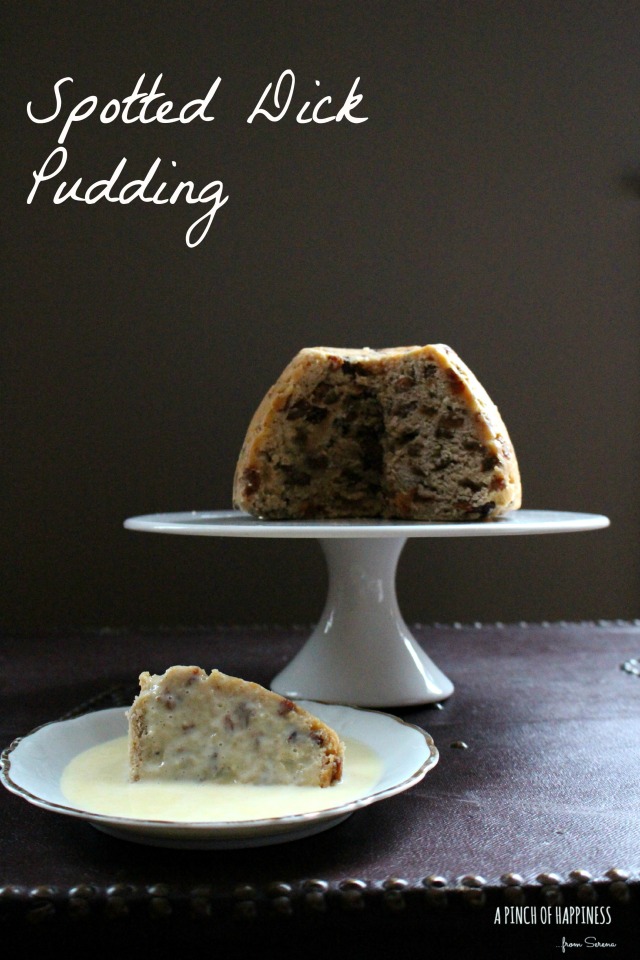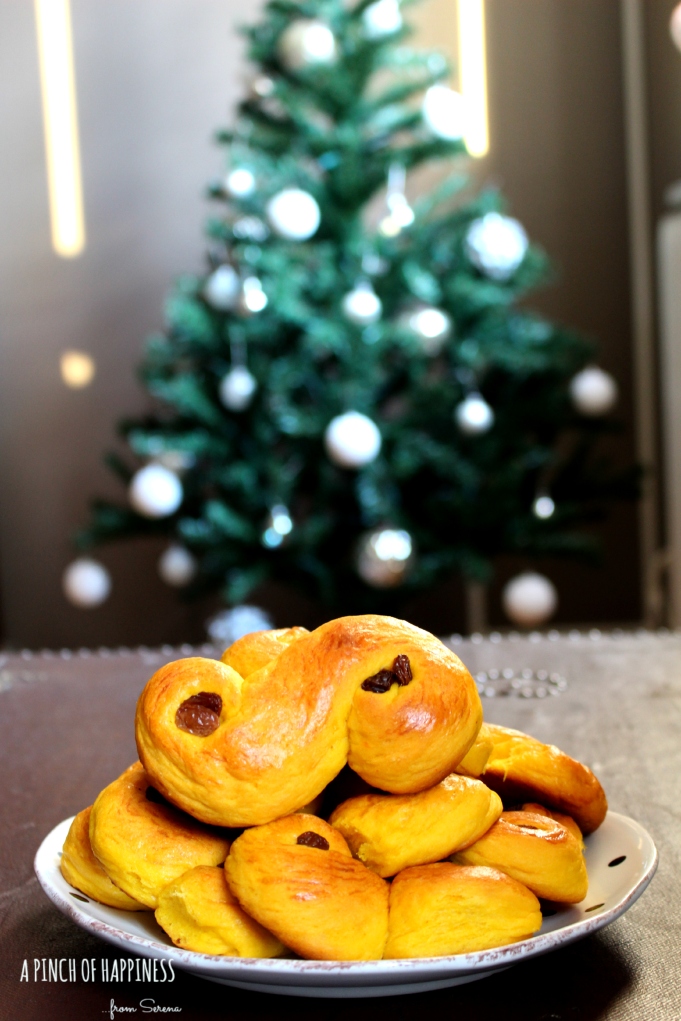[scorrete in basso per la versione in italiano]
I remember blushing when I ordered this at the restaurant. It was more like a whisper, really.
But then I read a little about it and discovered that “dick” was the word commonly used in the past for “pudding”. No one knows exactly why: some say it comes from the abbreviation of the word “pudding”, some that comes from “dough”. Anyway, all I know is that you definitely remember the first time you order it! 🙂
Apparently the history of puddings in England has had highs and lows until they went totally out of fashion at some point. During the 19th century though they had a huge revival thanks to Prince Albert, the consort of Queen Victoria, due to the fact that Victoria had a sweet tooth and puddings were her favourite thing. I have always loved Queen Victoria, and now I like her even more!
Back to spotted dick, this recipe made its first published appearance in Alexis Soyer’s The modern Housewife or ménagère, published in 1849 where it was described as a suet pastry rolled out and sprinkled with raisins. Nowadays it should be cooked in a special tin to get its traditional cylindrical shape, but the tin is impossible to find, so it is more commonly cooked in a regular pudding bowl. It is generally served hot with custard.
I really loved this recipe, it is yummy and super easy to make!
Ingredients for one 1.2 l. pudding bowl
- 225 g self raising flour or regular flour with 1 tsp baking powder
- 110 g shredded regular or vegetable suet
- 75 g golden cane sugar
- 225 g sultanas soaked in brandy
- a pinch of salt
- 150 g cold water
Sieve together the flour, the baking powder if you have it and the salt. Add the suet, the sugar and the fruit previously squeezed. Add the cold water (adding a drop more if you need it) to get a firm dough.
Place the dough in a greased pudding bowl, cover with foil following THIS method and steam for 2 hours.
Serve hot with custard and enjoy!
❤
Ricordo di essermi vergognata quando ho ordinato questo dolce al ristorante, per via del nome abbastanza singolare. Infatti più che altro l’ho sussurrato.
Ma poi ho letto un po’ di storia e ho scoperto che “dick” era in passato la parola comunemente usata per definire “pudding”. Non si sa esattamente il perché, alcuni sostengono che derivi dalla parola “dough”, altri che sia un’abbreviazione del termine “pudding” stesso. In ogni caso, quello che è certo è che vi ricorderete sicuramente della prima volta in cui lo ordinerete al ristorante! 🙂
A quanto pare la storia dei pudding in Gran Bretagna ha avuto alti e bassi, fino a che questi dolci così ricchi andarono fuori moda. Durante il diciannovesimo secolo ebbero un revival grazie al Principe Alberto, consorte della Regina Vittoria, che li riportò in auge a quanto pare a causa del fatto che Vittoria aveva un debole per i dolci e i pudding erano i suoi piatti preferiti.
A me Vittoria è sempre stata particolarmente simpatica e ora che ho scoperto questo suo amore per i dolci mi piace ancora di più!
Tornando allo Spotted Dick, questa ricetta ha fatto la sua prima apparizione su carta stampata nel libro di Alexis Soyer’s The modern Housewife or ménagère, pubblicato nel 1849 dove viene descritto come una pasta di suet stesa e cosparsa di uvette. Al giorno d’oggi viene cotto in speciali forme che gli danno la caratteristica forma cilindrica. Ma dato che questi stampi sono impossibili da trovare la maggior parte delle volte si finisce a cuocerlo in una normale ciotola da pudding. Generalmente viene servito caldo con crema inglese.
Questa ricetta mi è piaciuta tantissimo e oltretutto è facilissima da realizzare! Se non avete il suet potete provare a sostituirlo con shortening vegetale non idrogenato (avete presente quello bianco, tipo Crisco?) oppure con margarina. Potete anche utilizzare lo strutto, che è il grasso che di più si avvicina al suet oppure addirittura il burro, anche se non vi consiglio di usare solo burro per via del fatto che il dolce in se non deve avere un gusto burroso. Vi consiglio di comprare su internet dei pacchetti di suet, che viene già secco e tritato, è fantastico anche per preparare paste friabili….ma questa è un’altra storia! Lo trovate anche in versione vegetale se l’idea di fare dolci con grasso di manzo non fa per voi.
Ingredienti per una ciotola da 1.2 l.
- 225 g farina auto lievitante oppure farina 00 e un cucchiaino di baking powder
- 110 g suet o materia grassa scelta da voi per sostituire
- 75 g zucchero di canna chiaro
- 225 g uvetta sultanina ammollata in brandy
- un pizzico di sale
- 150 g acqua fredda
Setacciate la farina, il bakig powder se lo usate e il sale, in una ciotola. Aggiungete il suet, lo zucchero e l’uvetta strizzata. Aggiungete poi l’acqua (anche qualche grammo in più se serve) per realizzare un impasto molto sodo.
Ponete l’impasto nella ciotola da pudding imburrata, coprite con carta stagnola seguendo QUESTO metodo e cuocete al vapore per 2 ore.
Servite caldo con crema inglese e magari una bella tazza di tè al latte per un dessert very british! 🙂

















